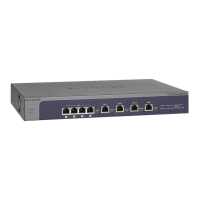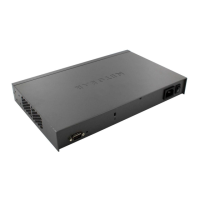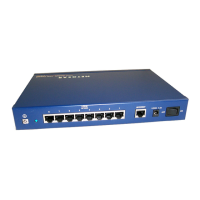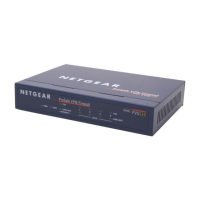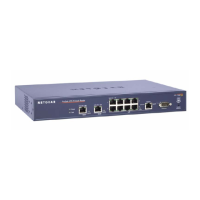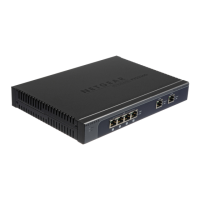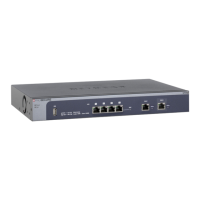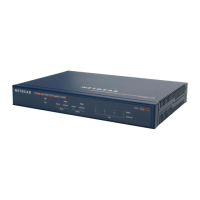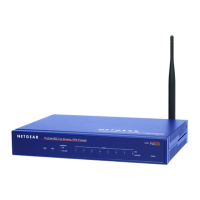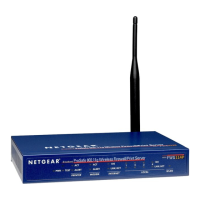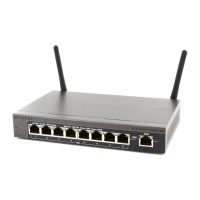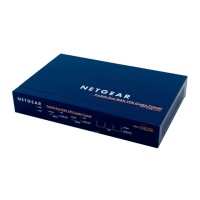Virtual Private Networking Using IPSec Connections
162
ProSafe Gigabit Quad WAN SSL VPN Firewall SRX5308
Each policy contains the data that are explained in the following table These fields are
explained in more detail in Table 38 on page 164.
To delete one or more IKE polices:
1. Select the check box to the left of the policy that you want to delete, or click the Select
All table button to select all IKE policies.
2. Click the Delete table button.
For information about how to add or edit an IKE policy, see Manually Add or Edit an IKE
Policy on this page.
Note: You cannot delete or edit an IKE policy for which the VPN policy is
active. You first need to disable or delete the VPN policy before you
can delete or edit the IKE policy.
Manually Add or Edit an IKE Policy
To manually add an IKE policy:
1. Select VPN > IPSec VPN. The IPSec VPN submenu tabs display, with the IKE Policies
screen in view (see Figure 104 on page 161).
2. Under the List of IKE Policies table, click the Add table button. The Add IKE Policy screen
displays:
Table 37. IKE Policies screen information
Item Description
Name The name that identifies the IKE policy. When you use the VPN Wizard to set up a VPN
policy, an accompanying IKE policy is automatically created with the same name that you
select for the VPN policy.
Note: The name is not supplied to the remote VPN endpoint.
Mode The exchange mode: Main or Aggressive.
Local ID The IKE/ISAKMP identifier of the VPN firewall. The remote endpoint needs to have this
value as its remote ID.
Remote ID The IKE/ISAKMP identifier of the remote endpoint, which needs to have this value as its
local ID.
Encr The encryption algorithm that is used for the IKE security association (SA). This setting
needs to match the setting on the remote endpoint.
Auth The authentication algorithm that is used for the IKE SA. This setting needs to match the
setting on the remote endpoint.
DH The Diffie-Hellman (DH) group that is used when keys are exchanged. This setting needs
to match the setting on the remote endpoint.
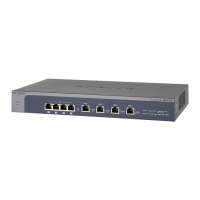
